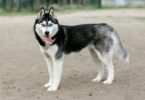What happens when a Yorkshire Terrier’s charm meets another breed’s traits? You get a spirited companion with surprises around every wagging tail. These small dogs inherit a unique blend of qualities, making every crossbreed distinct in looks and personality.
From fluffy coats to bold attitudes, these hybrids often defy expectations. Their behaviors might lean toward the Yorkie’s confidence or reflect another parent breed’s quirks. Even experts like Kingsgate Animal Hospital note their traits can vary widely.
Owners adore their loyalty and playful energy. But caring for them requires understanding their specific needs. This article explores everything from grooming tips to common health concerns.
You’ll discover how to support your pet’s wellbeing through tailored advice. Whether you’re a new owner or considering adoption, this guide offers science-backed insights for nurturing a happy, healthy companion.
Introduction to Yorkie Mix Dogs
Crossbreeding Yorkshire Terriers with other breeds creates companions brimming with unexpected qualities. Genetic combinations mean no two puppies inherit identical traits—even siblings often showcase wildly different looks and personalities. This variability makes every hybrid a delightful mystery waiting to unfold.
Understanding Mixed Breeds
Mixed-breed dogs inherit genes from both parents, leading to unique physical and behavioral blends. While some pups might favor the Yorkshire Terrier’s boldness, others could adopt the Shih Tzu’s calm demeanor. Factors like coat texture, size, and energy levels remain unpredictable until adulthood.
This genetic diversity can strengthen health through hybrid vigor. However, it also means owners must prepare for a range of possible needs. Regular vet checkups help address inherited tendencies early.
Why Yorkie Mixes Stand Out
These hybrids combine the best of both worlds: the Yorkie’s spirited nature and another breed’s distinctive features. Their compact size suits apartment living, while their loyal disposition fosters strong bonds with families.
Owners enjoy lower grooming demands compared to purebred Yorkies in some crosses. Yet potential challenges like stubbornness require patient training. Later sections will explore tailored care strategies to help your companion thrive.
Characteristics and Unique Traits
Every hybrid companion carries a personality shaped by its genetic mosaic. These spirited pups often showcase bold confidence paired with quirks inherited from their non-Yorkie parent. While some traits emerge early, others develop through socialization and environment.
Personality and Temperament
Loyalty and playfulness define many of these crossbreeds. They thrive on human interaction, often shadowing family members throughout the day. However, stubborn streaks may surface during training sessions—a potential nod to terrier lineage.
Veterinarians at Kingsgate Animal Hospital observe that energy levels vary widely. One pup might inherit a Chihuahua’s alertness, while another adopts a Maltese’s calm demeanor. Early socialization helps balance these tendencies.
Behavioral Nuances Inherited from Parent Breeds
Protective barking often traces back to the Yorkshire Terrier’s watchful nature. Meanwhile, digging or chasing behaviors might reflect another parent’s hunting instincts. Genetics play roulette with quirks like toy obsession or water avoidance.
Dr. Emily Carter, a canine behavior specialist, notes hybrids can display surprising intelligence. “Their problem-solving skills often outshine purebreds,” she explains. Yet each dog remains an individual—even littermates may develop distinct preferences for cuddling or independence.
Caring for Your yorkie mix: Tips and Advice
Maintaining your companion’s health requires a tailored approach that adapts to their unique blend of traits. Daily routines should balance physical activity with mental stimulation—think short walks paired with puzzle toys. Veterinary experts emphasize consistency in grooming, as coat types vary from silky to wiry depending on lineage.
Start training early using positive reinforcement. Reward calm behavior with treats to build trust and curb stubborn tendencies. Keep sessions under 10 minutes to match their attention span.
Watch for subtle signs of health issues like excessive scratching or changes in appetite. Small breeds often need dental care—brush teeth weekly and provide chew toys. High-quality food with lean proteins supports energy levels without weight gain.
Portion control matters: overfeeding can strain joints in compact dogs. Consult your vet about supplements like fish oil for coat health. Remember, no two pets inherit identical needs—adjust care based on their quirks and energy patterns.
Diverse Physical Characteristics and Coat Varieties
Genetic diversity creates a kaleidoscope of appearances in these small companions. Their features depend on which parent breed’s genes dominate, leading to endless combinations. This unpredictability makes each dog a one-of-a-kind masterpiece of nature.
Coat Types and Colors
Fur textures range from silky strands reminiscent of Yorkshire Terriers to coarse, wiry coats inherited from terrier relatives. Colors often blend shades like chocolate, gold, or steel blue. Some pups develop striking patterns such as brindle or parti-coloring.
Regular brushing prevents mats in longer-haired varieties. Vets recommend monthly baths with hypoallergenic shampoo to maintain skin health. For curly-coated hybrids, professional trimming every 6-8 weeks keeps fur manageable.
Size and Build Variations
Adult weight can vary from 4 to 15 pounds depending on the non-Yorkie parent. A cross with a Chihuahua might produce a delicate frame, while Maltese ancestry could create a slightly stockier build. Even within litters, siblings often show noticeable differences in height and bone structure.
These size differences affect exercise needs. Smaller dogs may require shorter walks but enjoy vigorous play sessions. Always monitor joint health in compact breeds through weight management and low-impact activities.
Health Concerns and Common Conditions
Small dogs often face distinct health challenges requiring proactive care. Dr. Jamie Whittenburg notes that hybrid breeds may inherit vulnerabilities from either parent, making early detection vital. Three conditions demand particular attention from owners.
Periodontal Disease and Dental Issues
Over 80% of small dogs develop tooth problems by age three. Their crowded teeth trap food particles, accelerating plaque buildup. Daily brushing with a finger brush reduces tartar, while dental chews help scrape deposits between cleanings.
Watch for red gums, bad breath, or reluctance to chew hard food. Untreated infections can spread to vital organs. Vets recommend professional cleanings every 1-2 years under anesthesia.
Liver Shunt and Luxating Patella
Liver shunts—abnormal blood vessels bypassing the liver—affect some small breeds. Symptoms include stunted growth, seizures, or confusion after eating. Surgical correction often succeeds if caught early.
Luxating patella (dislocating kneecap) causes intermittent limping or “skipping” steps. Mild cases improve with joint supplements and weight management. Severe instances may need surgery to realign the kneecap.
Schedule biannual vet exams to monitor these conditions. Blood tests detect liver issues, while physical exams assess joint stability. Early intervention dramatically improves outcomes for both health challenges.
Choosing a Reputable Breeder
Finding a responsible breeder sets the foundation for your companion’s lifelong wellbeing. Ethical practices ensure puppies develop in healthy environments while preserving genetic diversity. This decision impacts everything from temperament to long-term health outcomes.
Red Flags in Puppy Mills
Unsanitary conditions and overcrowded kennels often indicate unethical operations. Puppy mills prioritize profit over animal welfare, leading to behavioral and medical issues. Watch for breeders who refuse in-person visits or lack documentation about parent breeds.
Overbreeding is another warning sign. Responsible breeders limit litters to maintain the mother’s health. Avoid sellers offering multiple breeds—specialization shows commitment to quality over quantity.
Questions to Ask Breeders
Start by requesting health clearances for both parents. Reputable breeders provide OFA certifications for hips, eyes, and heart conditions. Ask about socialization practices: How do they expose puppies to new sounds and textures?
Inquire about their return policy. Ethical breeders always take dogs back if owners face unforeseen circumstances. Finally, meet the parent dogs if possible—their behavior offers clues about your puppy’s future temperament.
Exploring Popular Yorkie Mix Varieties
Designer crosses blend traits from beloved breeds into charismatic companions. Among these hybrids, certain combinations stand out for their winning personalities and distinctive looks. Let’s explore the stars of this genetic fusion.
Shorkies and Other Designer Mixes
The Shorkie—a blend of Shih Tzu and Yorkshire Terrier—epitomizes charm in compact form. These pups often sport silky coats with wavy textures, combining the best of both parent breeds. Their expressive eyes and perky ears make them instant attention magnets.
Energy levels vary between playful bursts and cozy lap time. Some inherit the Shih Tzu’s calm demeanor, while others channel the Yorkie’s spirited curiosity. Regular brushing keeps their fur tangle-free, though coat colors range from golden apricot to sleek black-and-tan combinations.
Traits of Shih Tzu and Yorkshire Terrier Crosses
This crossbreed typically weighs 7-15 pounds, making them ideal for apartment living. Intelligence shines through their quick learning ability, though stubborn streaks may emerge during training. Positive reinforcement works best with these sensitive companions.
Socialization shapes their behavior significantly. Early exposure to children and other pets helps develop their famously affectionate nature. Veterinary behaviorist Dr. Linda Case notes: “Their adaptability makes them excellent family dogs when properly introduced to household routines.”
As designer breeds gain popularity, prospective owners should research lineage and prepare for unexpected trait combinations. Whether you choose a Shorkie or another mix, understanding their unique needs ensures a fulfilling partnership.
Nutrition and Dental Care for Small Dogs
Proper nutrition forms the foundation of a vibrant life for compact canine companions. These petite pets require carefully balanced meals to support their high energy levels and unique metabolic needs. Let’s explore how strategic feeding practices paired with dental care create lasting wellness.
Dietary Guidelines for Optimal Health
High-quality dry kibble designed for small breeds helps maintain healthy teeth and weight. Look for formulas with lean proteins like chicken or salmon as the first ingredient. Measure portions using a kitchen scale—overfeeding by even 10% can lead to obesity in these tiny frames.
Split meals into two or three servings daily to stabilize energy levels. Avoid table scraps, which often contain hidden fats and sugars. Veterinarian Dr. Sarah Wilkins advises: “A consistent feeding schedule prevents blood sugar crashes common in small dogs.”
Maintaining Oral Hygiene
Daily tooth brushing with a dog-safe paste reduces plaque buildup by 70%. Start slowly—let your pet lick the paste off your finger before introducing the brush. Dental chews approved by the Veterinary Oral Health Council supplement brushing sessions.
Crunchy kibble textures naturally scrape tartar while providing essential nutrients. Annual dental exams catch early signs of gum disease. Remember: Clean teeth support heart health by preventing bacterial spread through the bloodstream.
Training and Socialization Strategies
Shaping a spirited companion’s behavior starts with understanding their unique learning style. These small hybrids thrive on routines that blend structure with fun. Positive reinforcement builds trust while channeling their natural curiosity into desirable habits.
Effective Obedience Techniques
Use high-value treats like freeze-dried liver to reward quick responses. Start with 5-minute sessions teaching “sit” and “stay” commands. Gradually increase difficulty as they master basics.
Clicker training works well for marking precise moments of good behavior. Pair the sound with immediate treats to create strong associations. Always end sessions on a success to boost confidence.
Crate Training and Independence
Introduce the crate as a cozy den with soft bedding and familiar toys. Feed meals near it initially, then inside with the door open. Gradually increase closed-door time from 30 seconds to 30 minutes over two weeks.
Never use the crate for punishment. Instead, make it a safe space for naps and quiet time. This approach reduces separation anxiety while teaching self-soothing skills.
Consistent training helps refine your dog’s personality, encouraging calm interactions with strangers and pets. Schedule socialization outings during their most alert periods—usually mornings for these energetic little dogs. Patience and celebration of small wins forge lasting bonds.
Adapting to Different Living Environments
Creating a pet-friendly home starts with understanding your companion’s spatial needs. These compact dogs thrive in various settings when owners implement thoughtful adjustments. Their adaptability shines through when routines align with their natural rhythms.
Apartment Living Tips
Maximize vertical space with wall-mounted beds or floating shelves for resting spots. Short, frequent walks paired with indoor play sessions burn energy without requiring large yards. Puzzle feeders engage curious minds during alone time.
Soundproofing helps minimize barking triggers from hallway noises. Establish a consistent potty schedule using pee pads or balcony grass patches. Compact exercise pens create safe zones when you’re busy.
Considerations for Families and Children
Match the dog’s temperament to your household’s energy level. High-spirited animals might overwhelm toddlers, while calmer ones blend seamlessly into busy homes. Always supervise interactions until trust builds between kids and pets.
Introduce other animals gradually through scent swapping and controlled meetings. Many small dogs bond well with cats when introduced during puppyhood. Remember: Patience and positive reinforcement forge peaceful multi-pet households.
Final Reflections on the Yorkie Mix Journey
Raising a crossbreed dog offers a unique adventure filled with surprises at every turn. These spirited companions blend traits from their parent breeds in ways that keep owners constantly engaged. Whether inheriting a Shih Tzu’s calmness or a terrier’s boldness, each pup develops a one-of-a-kind personality.
Proper care requires adapting to their specific needs. Consistent grooming, portion-controlled meals, and early dental routines prevent common health conditions. Training sessions using positive reinforcement help shape confident, well-mannered pets.
Choosing ethical breeders ensures puppies start life with strong genetic foundations. Ask about health clearances and socialization practices when selecting your companion. This decision impacts their lifelong wellbeing and temperament.
Early exposure to diverse environments helps crossbreeds become adaptable family members. Regular vet checkups and tailored exercise plans maintain their vibrant energy. Every challenge overcome strengthens the bond between owner and dog.
Embracing this journey means celebrating the quirks that make each cross unique. With the right care strategies, these loyal companions thrive as joyful additions to any home. Let your newfound knowledge guide you toward creating a fulfilling life together.
FAQ
What health issues are common in Shih Tzu and Yorkshire Terrier mixes?
These small designer dogs often inherit dental problems like periodontal disease due to crowded teeth. They may also face liver shunts or luxating patellas. Regular vet visits, quality food for small breeds, and daily tooth brushing help manage these risks.
How much exercise do Shorkies need?
While energetic, their compact size means short walks and indoor play suffice. Aim for 20–30 minutes of activity daily. Mental stimulation through puzzle toys or training sessions also helps balance their lively personalities.
Are Yorkie mixes suitable for first-time dog owners?
Yes, with proper research. Their affectionate nature thrives on consistent routines. Early socialization and positive reinforcement training work best. Partnering with a vet or professional trainer ensures you meet their grooming and healthcare needs effectively.
What coat types do Shih Tzu-Yorkie crosses have?
Coats vary from silky (Yorkshire Terrier-like) to wavy (Shih Tzu-inspired). Colors include black, tan, gold, or combinations. Daily brushing prevents mats, while professional trims every 6–8 weeks maintain hygiene and comfort.










Leave a Comment